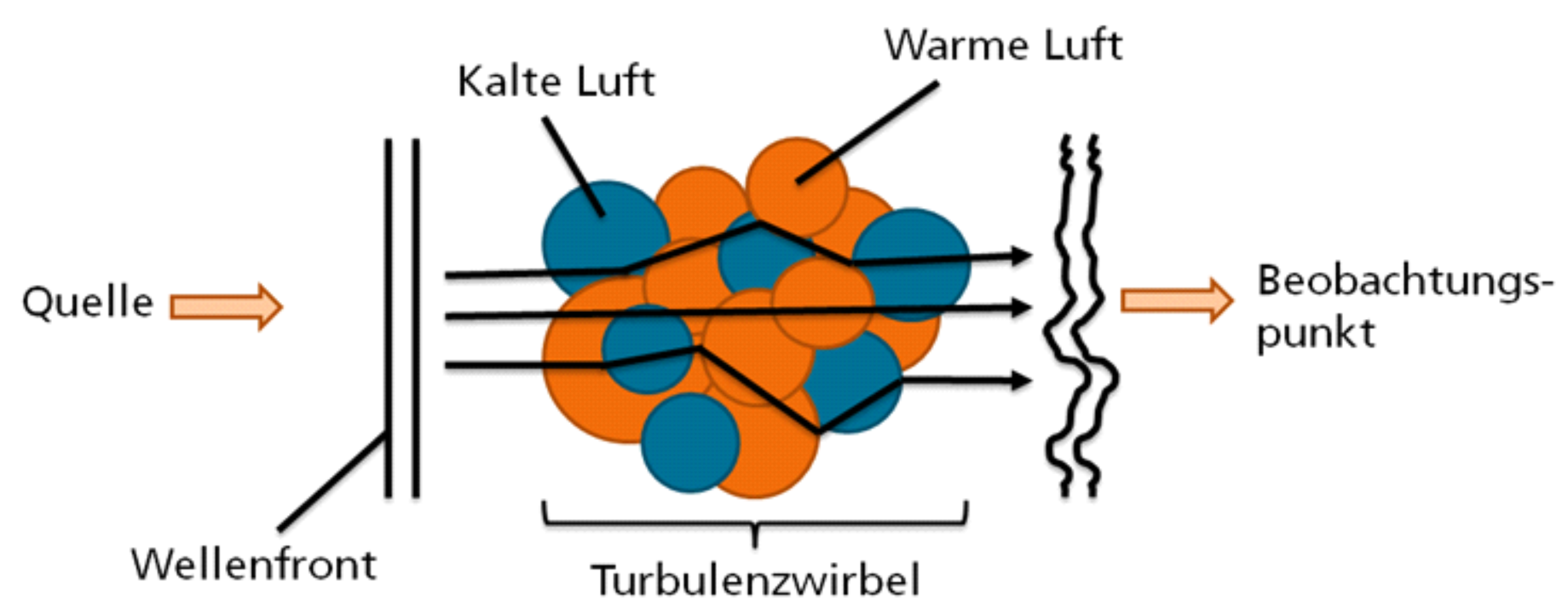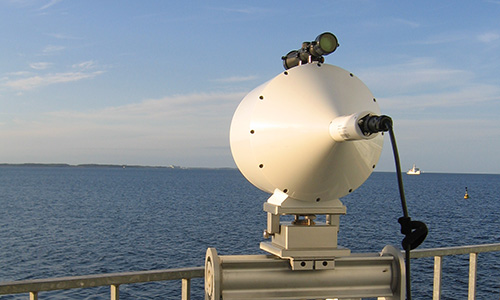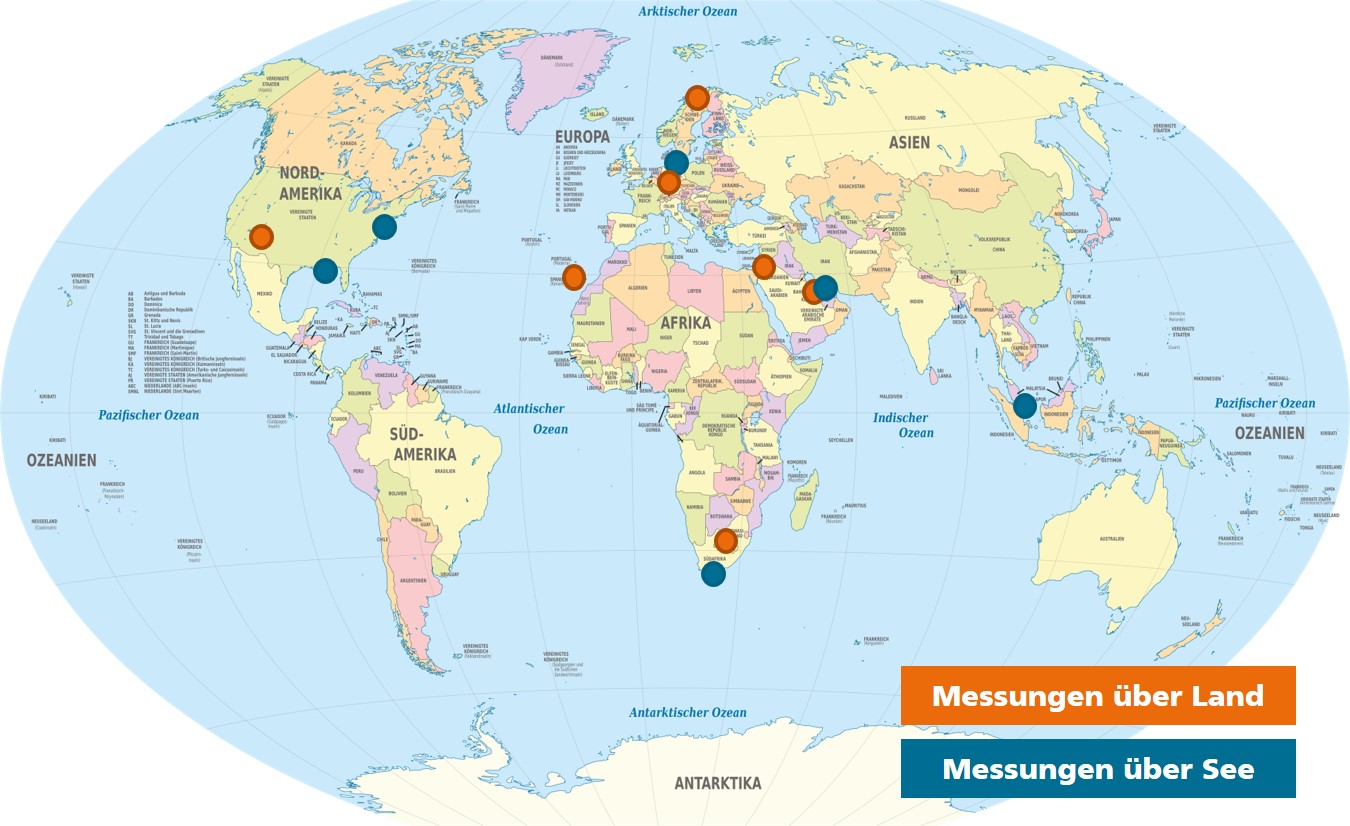


Variations in the refractive index of air influence the wave propagation in the entire electro-optical wavelength range. The refractive index of air is a function of temperature, humidity and air pressure. In the considered conditions of the atmospheric boundary layer close to the ground, high-frequency pressure variations are negligible. The refractive index is reciprocal to the observed wavelength λ2, i.e. it has less effect on long-wave radiation than on short-wave radiation. For wavelength ranges in the visible and near infrared, temperature fluctuations are dominant and adequately describe the fluctuations in the refractive index. In the figure, the effect of turbulence on a flat wave front is shown schematically.
The strength of the fluctuations in the refractive index of air is described by the structural function parameter of the refractive index of air, Cn2, the so-called optical turbulence. Optical turbulence is the quantity used to describe atmospheric correction factors in the wave propagation of electro-optical or laser systems. Cn2 is also used as a turbulence parameter to evaluate the quality of measuring systems in simulation and to predict it in operational applications.
The optical turbulence is dependent on thermal (warming) and mechanical (wind shear, i.e. increase of the horizontal wind speed with height due to the decreasing influence of the earth friction) influences. Therefore, optical turbulence is very variable in time and space and requires a precise description of the meteorological conditions.
In addition, Fraunhofer IOSB has a database of ground-level Cn2 values over water and over land, measured at selected locations worldwide.
 Fraunhofer Institute of Optronics, System Technologies and Image Exploitation IOSB
Fraunhofer Institute of Optronics, System Technologies and Image Exploitation IOSB